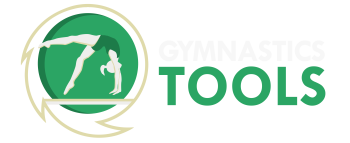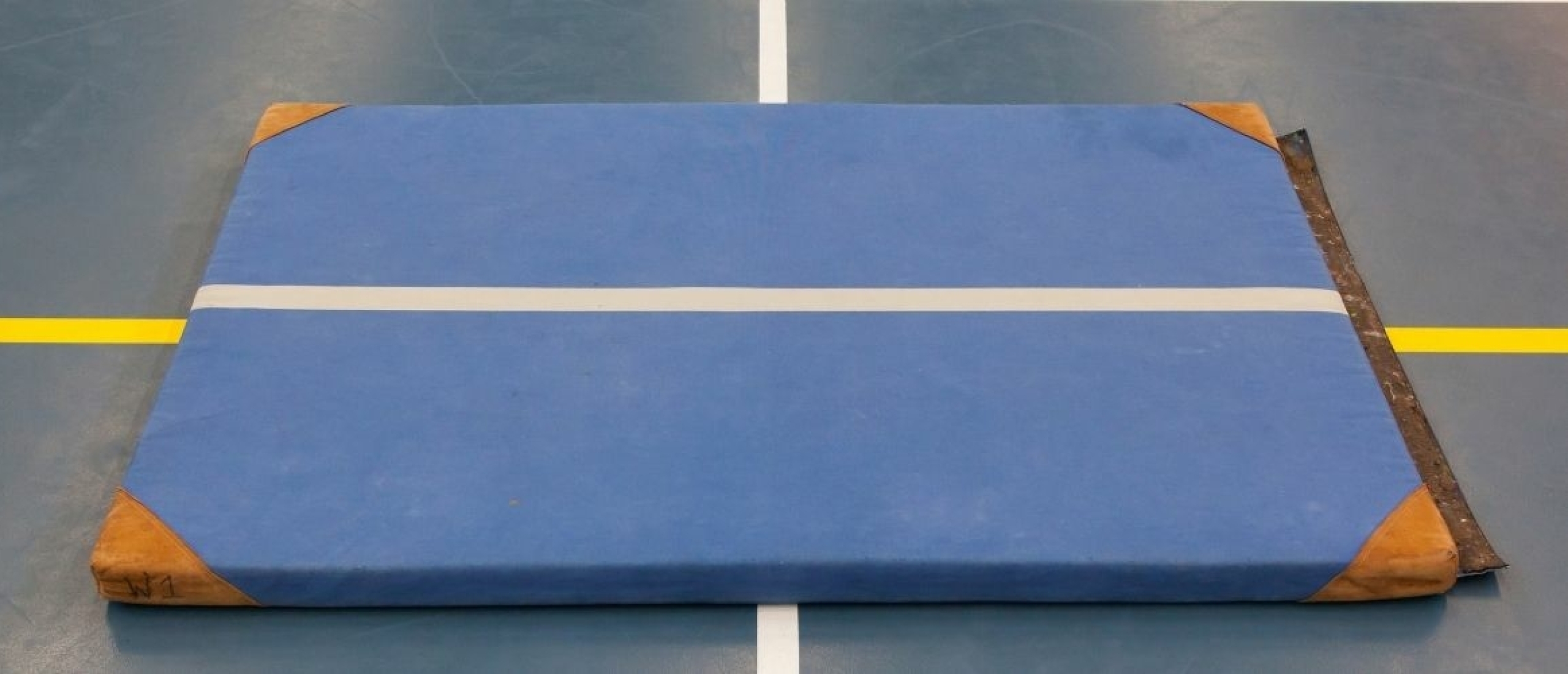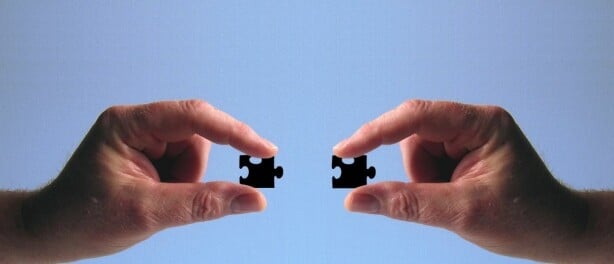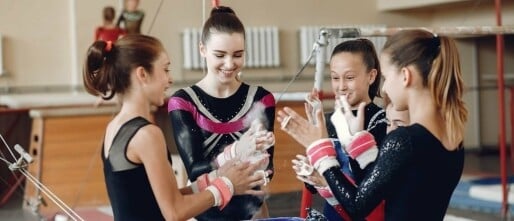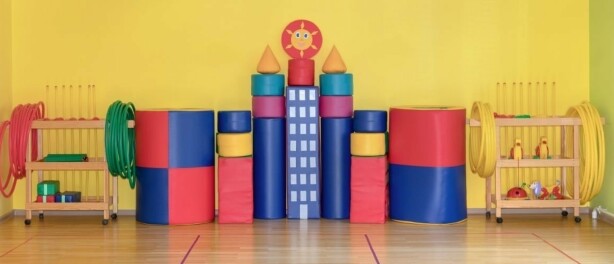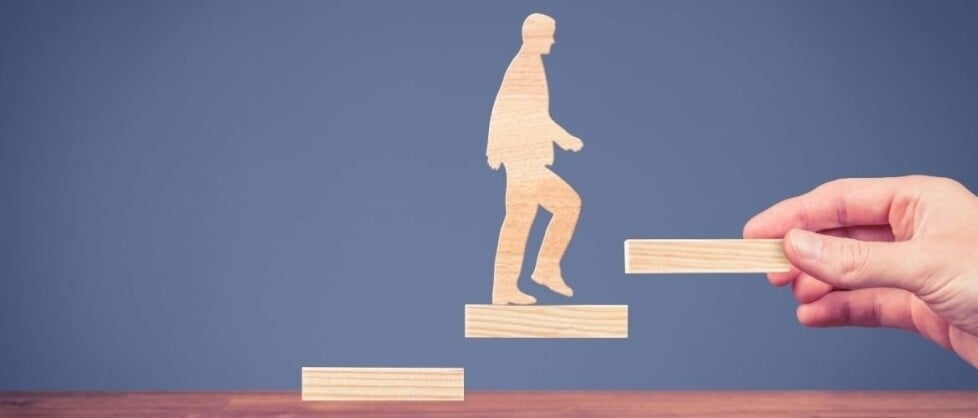How do you make it easier to build up the apparatus and equipment during gymnastics lessons? If you are a gymnastics teacher you will recognise that you drag a lot of equipment during the lessons you give. A lot of these materials are also heavy and very stressful for your body. That's why it's always useful to think about how you can make building up the lesson with the materials easier. And speed it up for yourself. This is also a question that often comes up with people in the gym. I will give you a few tips to get started. To make it a little easier for you.
The problem with building up
You are often alone as a teacher in a gymnasium and you have a lot of materials to drag around, such as thick mats. These weigh quite a bit, especially when you have to drag the mats from one side to the other. It can make a difference how much material you have to drag in a lesson. And where you have to drag them to and position them. Besides dragging materials in a lesson, you also catch a lot in general. You have to help a lot with movements. That is also often heavy for your body. You also regularly stand in the hall for several hours at a time. This is also very demanding for your body.
So it is very wise to look at this and know how to do things with building up and how to make it easier for yourself. In this way you make sure that there is less strain on your body. This is something that I also had to learn. I have given a lot of gymnastics lessons myself, but I have also been active as a gymnastics teacher and as a combination functionary and I have given a lot of lessons and stood in the hall. So I have dragged the necessary materials back and forth during the lessons.
During my career, I have suffered from an incipient hernia, which caused me to suffer from my back. Especially after carrying a thick mat, for example. So I really had to think about how I could organise my lessons so that I could still give my lessons and have as little problems as possible. So I hope to be able to share with you some things about how I approach this myself.
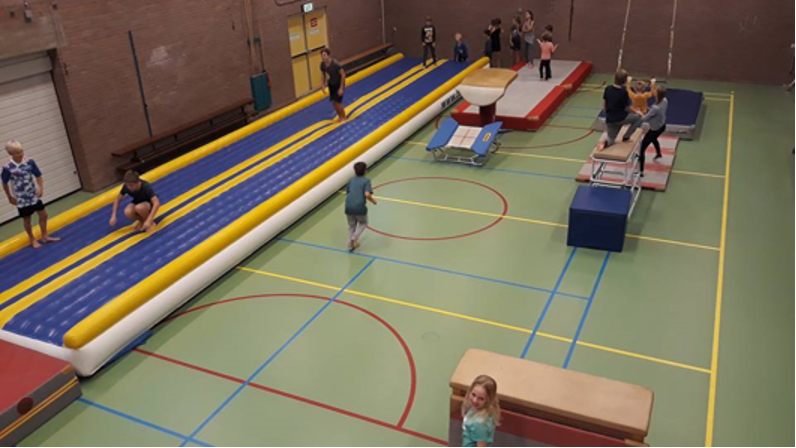
How do you make building easier?
Start very simply: make sure you prepare a lesson. It does not necessarily have to be one on paper, but at least prepare well in advance. It happens quite often that trainers quickly think about what they are going to do while they are driving to the training. But if you map things out for yourself with a lesson plan, you can also take a good look at where you position the materials and how you put them. This makes it easier for you to build things up. Also look at how you place the materials for yourself for your lessons. This is also related to the layout of the storage room. Many gyms have two entrances to a storage room.
Suppose there is a bridge that you want to use to practise a chest-up, for example, then it can make a difference whether you drag the bridge a little way or whether you put it further into the gym. It may not make much difference to your class, but it does to you to what extent you have to drag the bridge into your class.
If, for example, you want to get some thick mats, it can already take a lot of time. Before you know it, you might need 45 minutes to prepare your lesson if you don't have any help. So you can quickly save time with this.
Layout of the appliance storage
Of course it is always good to look at the Shed. So if you have any influence on it to adapt the storage room to your wishes, it might be wise to look at whether there are certain things you should perhaps adjust. Appliances that you always use, or certain materials that belong together are best put in front. This way you can look at the layout of the storage room and see if you can adjust things to it.
Exercise
Then we move on to some exercises. Of course, it depends on how you use the exercises and how many materials you need. For example, when squatting you can choose to use a bridge. But maybe you have a couple of horizontal bars in your gym. In that case you can choose to use two or maybe four parallel bars. In that way you determine with the number of apparatuses how many gymnasts can practice. You can also choose for small equipment and side activities to get more gymnasts started with a certain gymnastic element without necessarily needing more equipment.
Squatting with small equipment
I will show you some examples for the element squatting. An example exercise is squatting with the help of a stick. With this, a gymnast learns the position in which she should squat with the feet and where she should put the feet. It is something that at least a young gymnast has to learn. In a gymnasium, you often already have sticks at your disposal, which you can of course easily grab and don't need anything else to be able to do this exercise.
There are also benches in the gymnasium. With a bench you can also crouch down. The advantage of a bench is that you can easily put it down, because there are wheels under the bench, and also many gymnasts can practice at the same time on a bench. Four or five gymnasts can squat on a bench at the same time. That way you can put a bench next to a bridge and a lot of gymnasts can practice squatting at the same time. It is also a very nice and safe exercise for gymnasts to do.
You also have small equipment, for example a Frisbee and a line where a gymnast learns to squat on a line. The Frisbee also makes sure that the knees are kept together in an implicit way. When squatting, gymnasts often have the tendency to spread their knees apart, with the knees going past the arms instead of neatly between the arms. This is a common mistake when squatting. So this is a good exercise to learn this in a good way.
High teaching intensity
It can also be done in another way, for example with a thick mat. A thick mat is very easy to lay down in a hall. The advantage of a thick mat is that it is very large, so that many gymnasts can do this exercise on it at the same time. With this mat you can practice squatting on a thick mat with maybe ten gymnasts at the same time. Squatting on a thick mat is also a nice safe exercise to teach gymnasts to squat. You can also make them do many repetitions with all these exercises.
There may be some bobbins in your hall. It is also very easy to place bobbins in the hall. If you combine all these exercises, you might be able to get 10-15 gymnasts to do squats at the same time, instead of having to set up a lot of horizontal bars.
Parents during assembly and disassembly
Probably the most obvious option; parents. They are often there anyway, so it is best to ask parents to lend a hand. Some parents will offer to do this themselves, others you might have to ask. They may not always be present during the build-up, but they can certainly ensure that the hall is spick and span again during the breakdown. Please note that parents do not always know how to handle the equipment! So always check the equipment yourself and don't let parents set up the more difficult equipment themselves. Most of the halls where I taught, by the way, had pictures of the layout of the equipment room. This is of course very helpful, because parents can simply look at these pictures to see how they should be positioned.
Floor plan and fixed tasks
It can be useful to give gymnasts who are always early or assistants who are on time fixed tasks. This requires some preparation on your part, because a floor plan is useful. Make a floor plan and put names on it. Those who come in can then immediately see what they have to do. You can also work with colours for the younger children. Make clear agreements with your gymnasts about building up and dismantling. Make sure everyone has a task and that it is clear. Also make sure they understand that this is a joint responsibility, otherwise they won't be able to start the training.
If you have gymnasts helping out a lot, it might be nice to move the equipment to the right side of the hall if possible, so that it only has to be set up there.
Lesson preparation for assembly and disassembly
If you are in different groups and don't do the same thing in each group (like toddlers and recreational gymnasts), it might be useful to take into account the parts you are going to do in that lesson in your preparation. For example, if you set up the beam for your toddlers but you don't actually need it in the lessons after that, then it might be better to do it differently. Avoid unnecessary conversions by using the beam in all your lessons.
You may also be able to use situations in different ways for the groups sitting next to each other. A sloping surface can of course be used for log rolls by the toddlers, the roll forward by the 6-8 year-olds and for a flip-flop by the 12+.
Instruction
During the Level 3 course, it will be covered in detail: Who, what, where, when, which way and what then. Be clear about what you expect from your gymnasts or parents by defining these things. This way, you will have an easy overview and you can also quickly see who you can put back to work.
Communication and doing things together is therefore the most important thing when building up and breaking down the hall quickly. As the saying goes, many hands make light work.
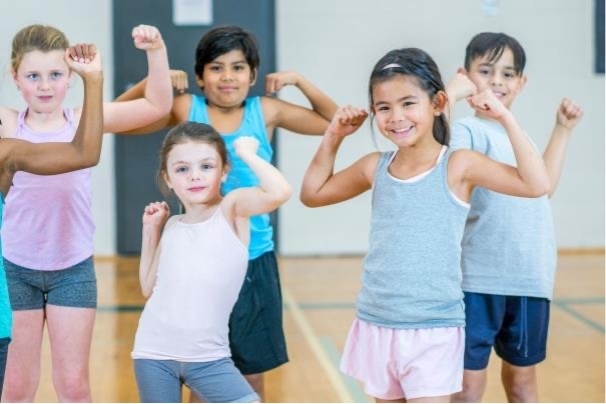
Tips
- Try to synchronise your lessons. As a gymnastics trainer or teacher you usually give several lessons in one day. So try to coordinate your lessons by looking at what materials you are going to use and what you need for your lesson cores. As a teacher you may choose to use a different type of core every hour or offer different things. But if you choose to do that, at least try to keep using the materials you have, you might want to adjust them. But that way you don't have to keep dragging everything back and forth.
- Arrange for assistants... It is an easy way that can relieve you and help you as a teacher with the dragging and putting together of materials.
- Let parents and/or gymnasts help. You can let the gymnasts help during the lesson or possibly just before. Of course, parents can also help. You will not see this happen in every club. For example, if you would like to involve parents as volunteers to help build up the materials, it can often help to explain to the parents why you think this is very nice. But also why it's very important for the parents and for the gymnasts, because if you choose to assemble just before the lesson, it could be that you have much more time in the lesson itself to help the gymnasts and to make them perform better. Of course, the parents pay for the lessons, so if they help out beforehand, it will be of great benefit to themselves and the gymnasts.
Also consider:
- Delegate. This is something that many trainers can learn from. I also notice this in myself, it can be a pitfall. Sometimes you're in the hall dragging a lot of materials back and forth. While there are plenty of other gymnasts who might be standing around doing nothing and looking around. Especially if you are a new trainer or a trainer in training, it is good to make sure that you start delegating. So make sure that you first put all the gymnasts and assistants to work. Both in building up and breaking down the apparatus, before you start doing that yourself. So make sure that you delegate first. After that you can choose to set up some more things yourself.
- Think about your own attitude. This is also important for me personally. Think about your back, about your posture, especially if you are lifting heavy things, for example if you have to lift a thick mat. It always helps me to tighten my belly and pelvis. That way you get less strain on your back. That way you can keep up the lessons much better and you can drag more material if necessary. When I didn't do that, I noticed very quickly that my back was bothering me. That is not very pleasant when you are in the hall and you want to help a lot of gymnasts. While you are also suffering a lot from your back. So this is at least something good to take along! (Even if you don't have problems with your back yet.) The load is so great, so it is wise to pay attention to that.
Finally
If you need any more tips, we have many different downloads on our website that you can download for free. These are different checklists and other resources that might inspire you. If you are a premium member with us, we have several tools on our platform. We have different modules and lessons on there that can help you make your lesson easier. And you will be able to prepare your lessons a lot faster and raise the level of your athletes.
I hope you found this valuable and that it helps you in your lessons with building up materials. Good luck with your lessons!
